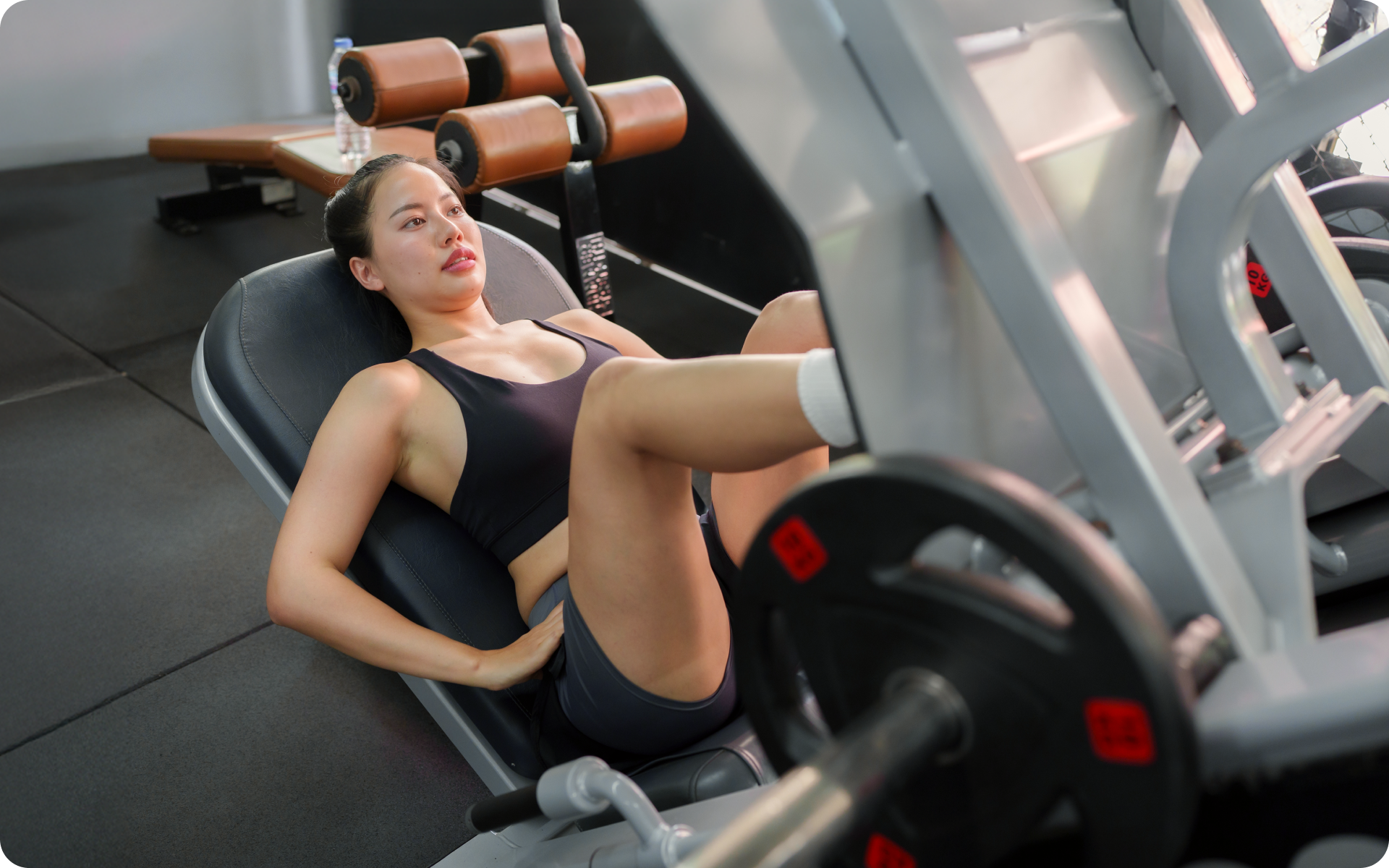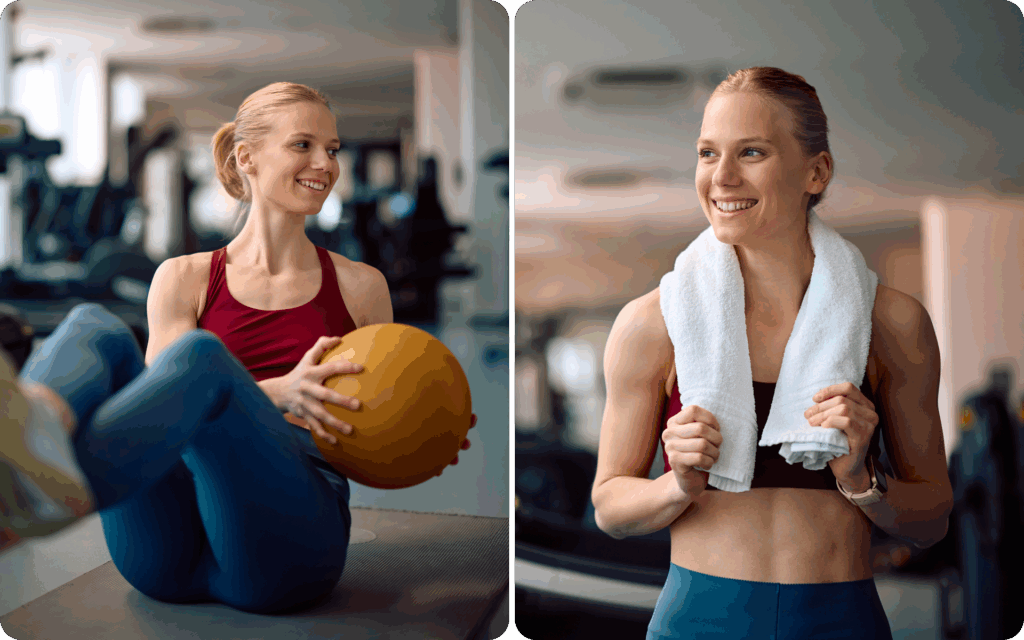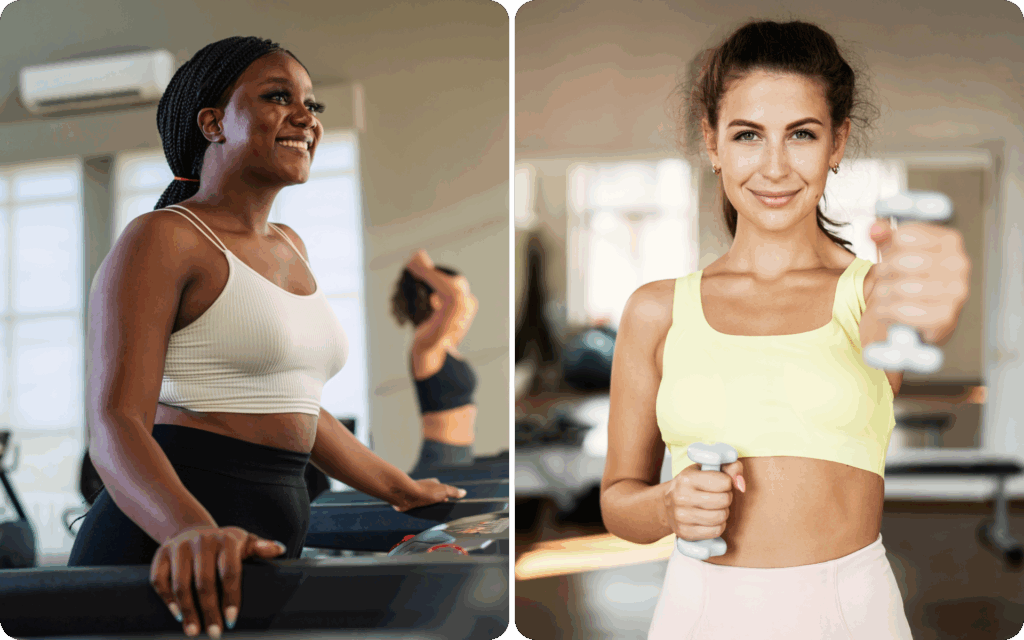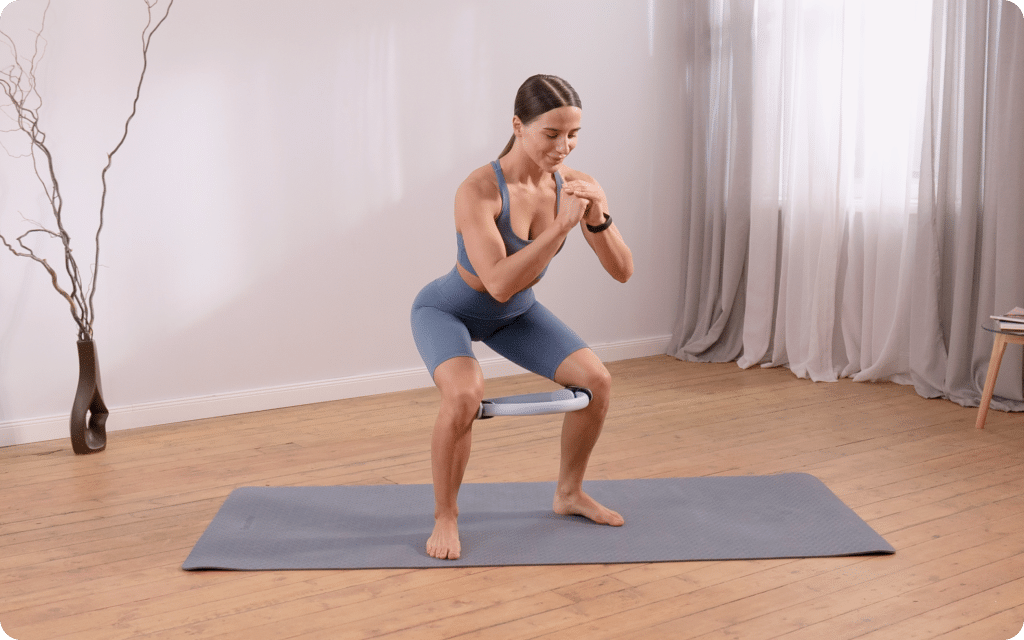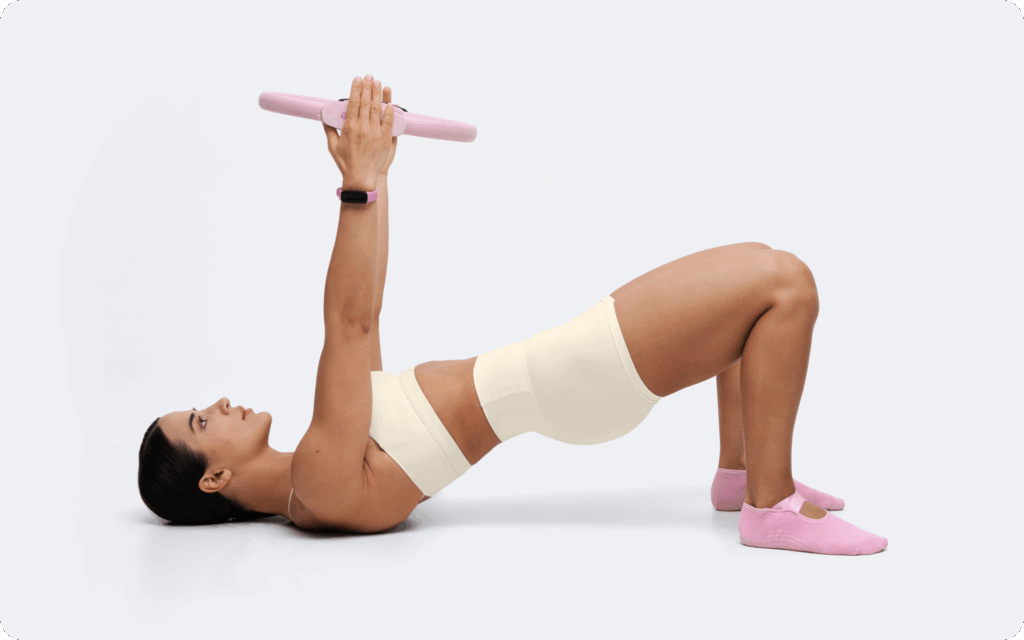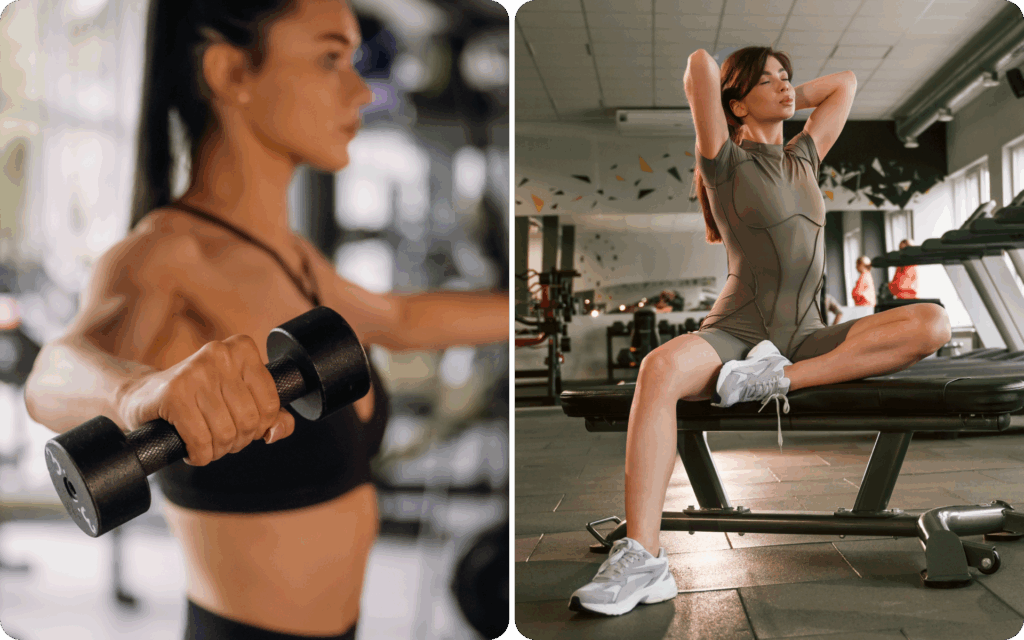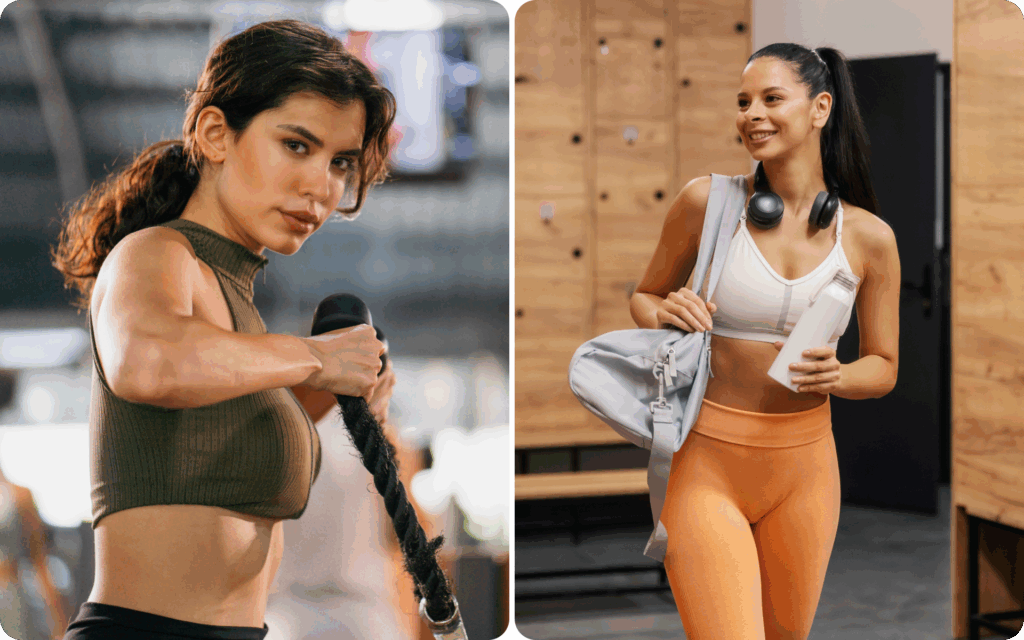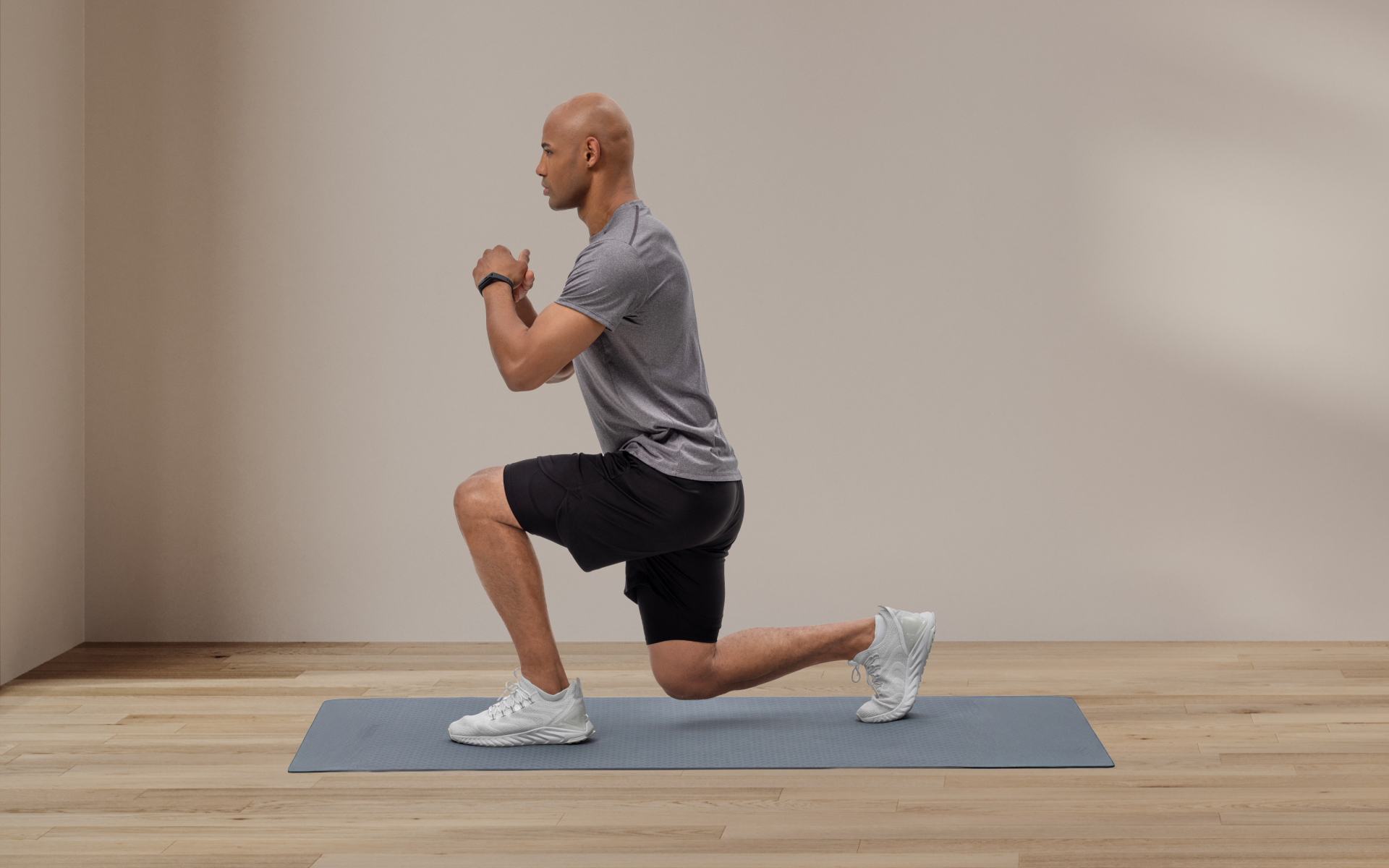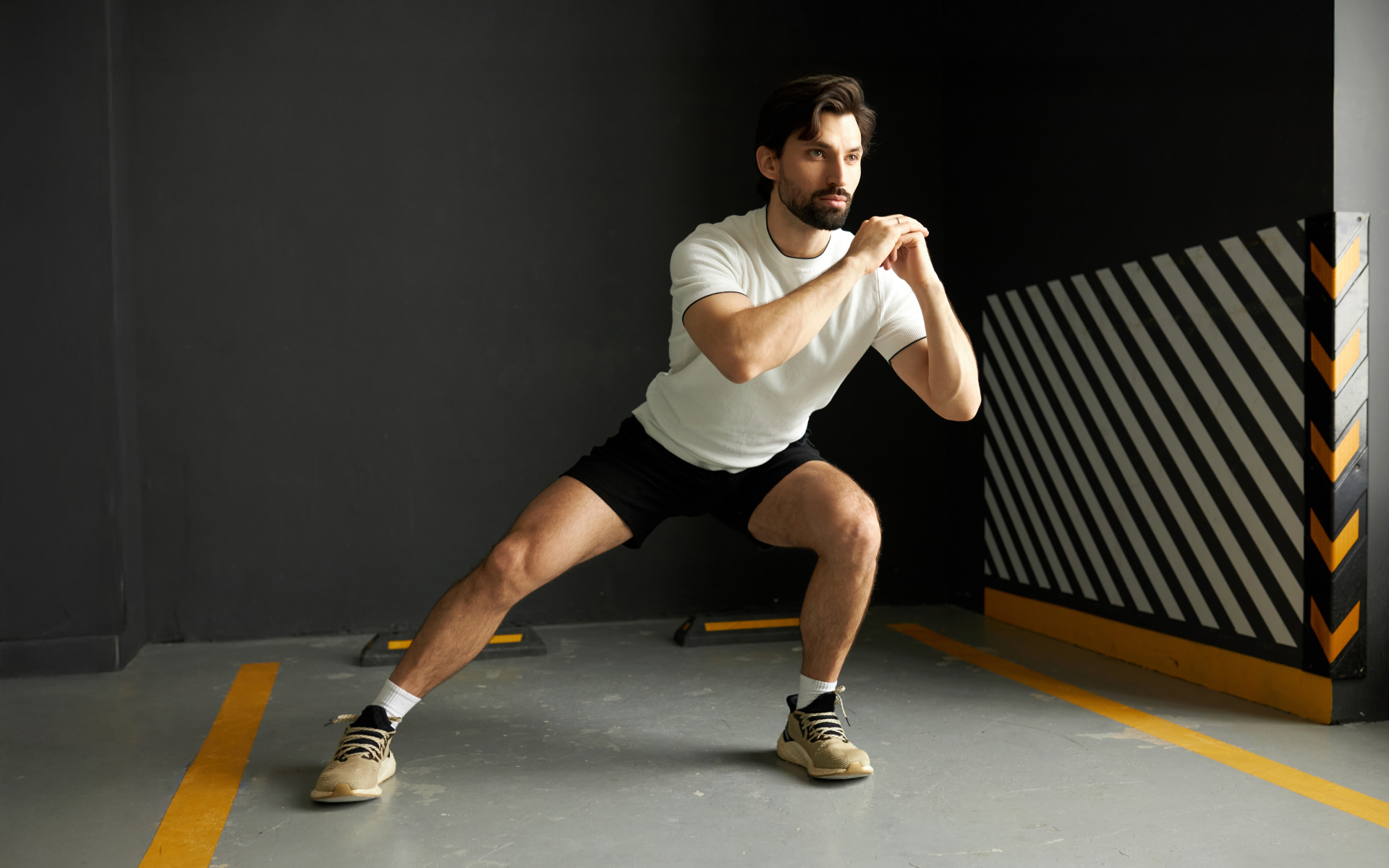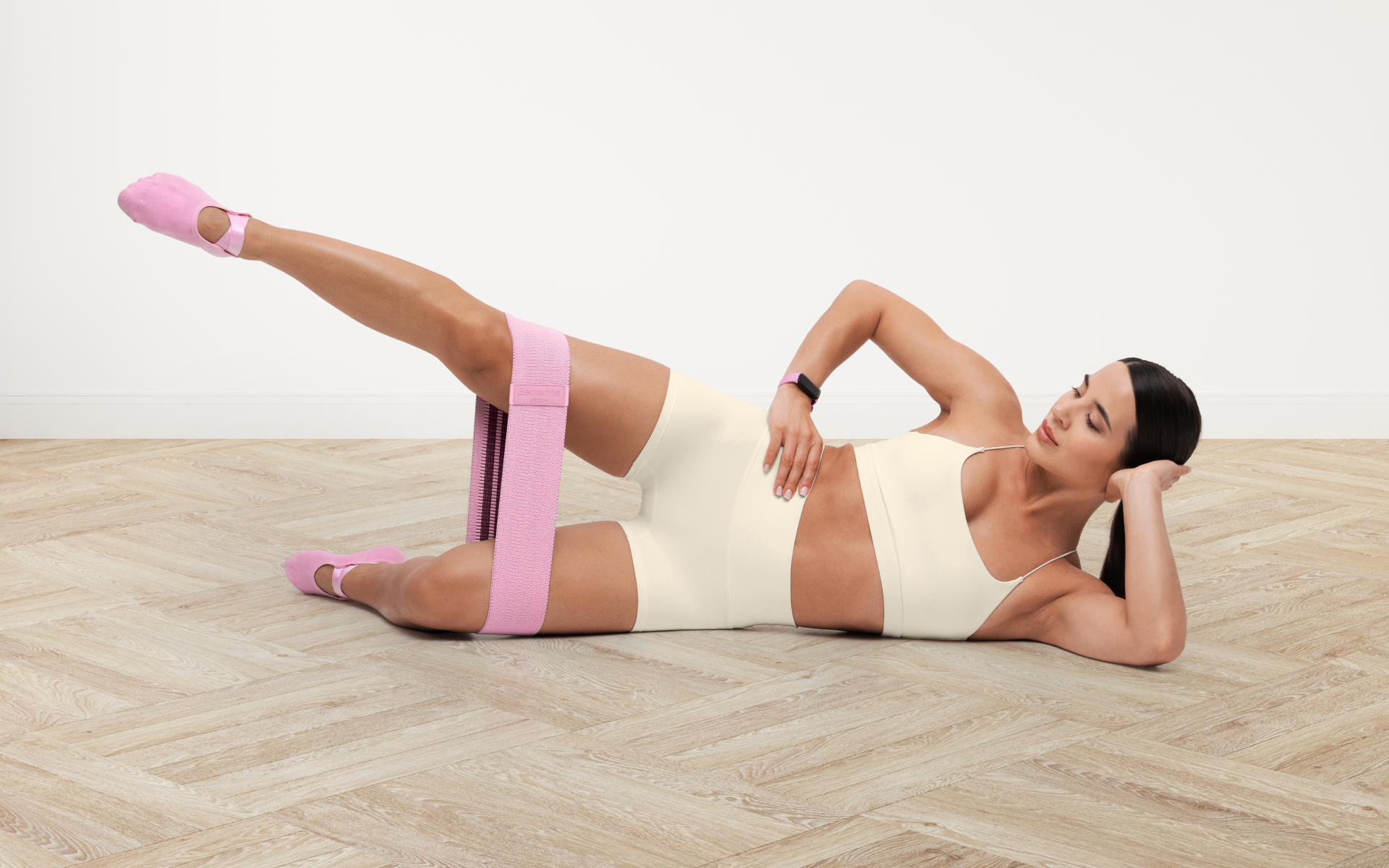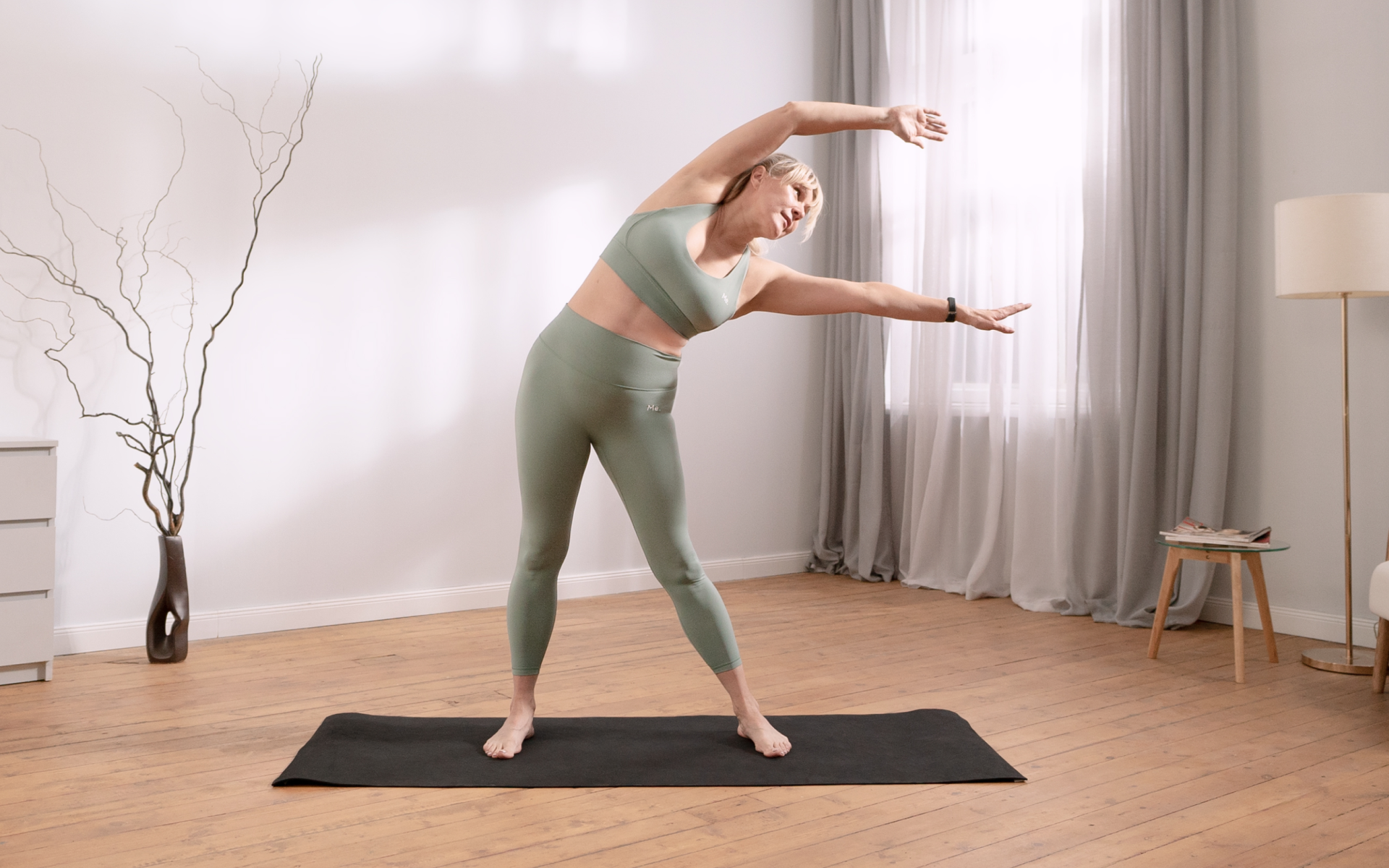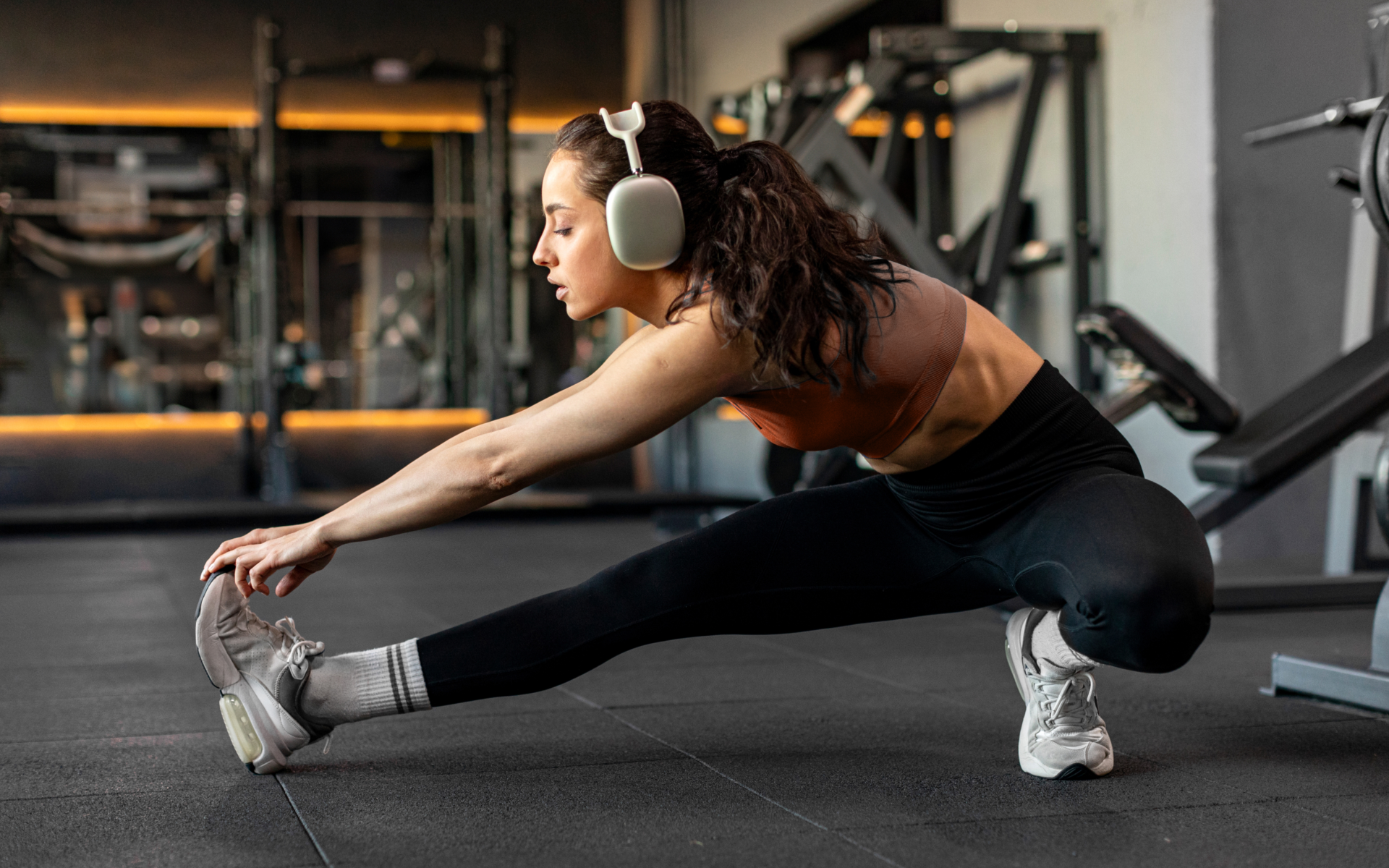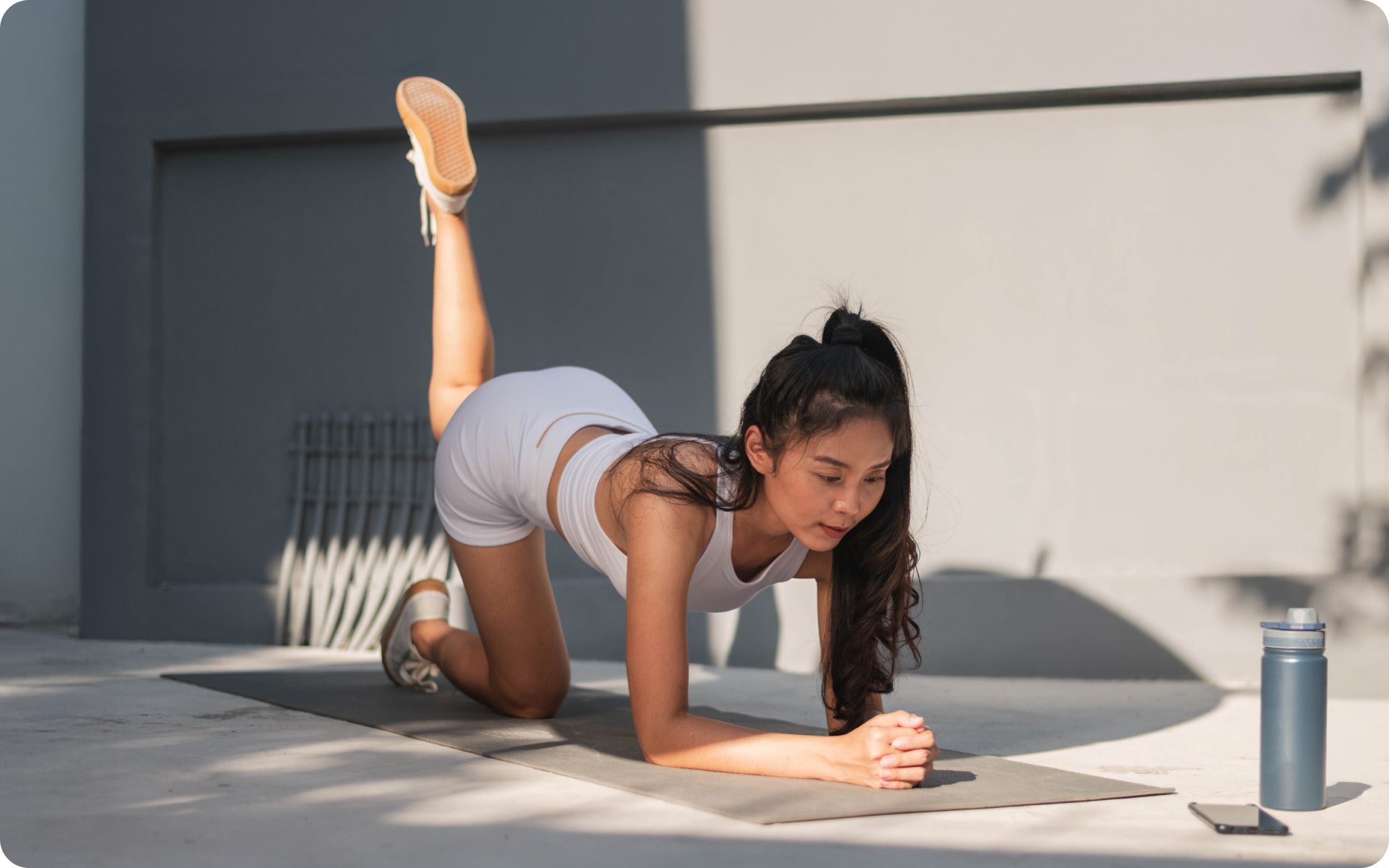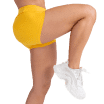Your legs provide the base for almost every movement your body performs, from walking and running to lifting and jumping (1).
Building strength in the lower body isn’t just about aesthetics or performance, it’s about developing balance, stability, and functional strength that supports everything you do in your daily life (2).
That being said, starting a leg workout routine at the gym can feel overwhelming. With so many exercises to choose from, how do you know where to start?
This guide is designed to take the guesswork out of your leg training. Let’s walk through essential exercises that are perfect for beginners, explain how they fit together into a well-rounded routine, and provide tips to help you train safely and effectively.
How to Start Working out Legs for Beginners
Starting your leg workout routine doesn’t need to be daunting. The key is to understand the fundamentals so you can build a strong foundation while avoiding unnecessary setbacks. Here’s what you need to know to get started safely and effectively. To learn more about the calisthenics leg workout, check out our in-depth article on the topic.
Understand the Key Muscle Groups
The first step to a solid leg workout is understanding the muscles you’re targeting. Your lower body isn’t just about your thighs or calves, it’s a network of powerful muscles that each play a crucial role in how you move (3). The major groups include:
- Quadriceps: Located at the front of your thighs, these muscles help with knee extension during actions such as squatting and lunging.
- Hamstrings: Found on the back of your thighs, they control knee flexion and hip extension, which are crucial for movements such as sprinting or bending over.
- Glutes: These are the muscles in your buttocks. They’re powerhouse muscles and are essential for hip stability and force generation.
- Calves: These muscles in your lower legs power up movements such as running and jumping.
- Hip Stabilizers: Smaller muscles in your hips, such as the gluteus medius, ensure balance and proper alignment during movement.
Knowing your muscle anatomy will help you feel more in control of your workout, as you’ll understand exactly what each exercise achieves.
Prioritize Proper Warm-Up
A warm-up isn’t optional. It’s an essential part of lowering your risk of injury while preparing your body for intense activity. Start with 5-10 minutes of light cardio, such as brisk walking, cycling, or using a rowing machine. This increases blood flow to your muscles, which makes them more pliable (4)
Next, incorporate dynamic stretches such as leg swings, lunges with a twist, or glute bridges. These moves gently activate the key muscles you’ll rely on during your session, which improves your range of motion and fires up your nervous system for better coordination (5)
Choose Basic, Compound Exercises
For beginners, less can often mean more. Focus on a few foundational exercises that work multiple muscle groups at once to build strength and coordination:
- Bodyweight Squats: A great starting point to build quad, glute, and hamstring strength. Once you’re comfortable, you can progress to weighted versions.
- Lunges: These target your quadriceps, glutes, and hip stabilizers while also challenging your balance.
- Deadlifts (with Light Weight to Start): Ideal for strengthening your hamstrings, glutes, and lower back. Maintain strict form to avoid strain.
- Leg Press: A machine-based exercise that allows you to target your entire lower body while maintaining a controlled range of motion.
Stick with just 3-4 exercises at the beginning, performing 2-3 sets of 8-12 reps for each. This will help you gradually develop strength and endurance without overloading your body (6). Our previous post goes into great detail about lower body calisthenics.
When it comes to weight loss, progress is made by inches, not miles, so it’s much harder to track and a lot easier to give up. The BetterMe: Health Coaching app is your personal trainer, nutritionist, and support system all in one. Start using our app to stay on track and hold yourself accountable!
Focus on Form and Technique
Strength training is only effective when it’s done with proper form. Without it, you risk poor muscle engagement or potential injury (7). For each exercise:
- Keep your movements slow and controlled to engage the target muscles.
- Maintain proper alignment. For example, during a squat, ensure your knees remain aligned with your toes.
- Avoid excessive weights early on. Prioritize technique before progressing to heavier loads.
If you’re unsure about your form, don’t hesitate to ask a trainer for guidance or record yourself performing the movement to identify areas for improvement.
Recovery is Part of Training
Recovery isn’t just about resting, it’s an active part of getting stronger. Beginners often underestimate how important it is to allow time for their muscles to repair and grow following a workout (8). Follow these guidelines:
- Rest: Allow at least 48 hours between leg sessions to avoid overtraining.
- Hydrate: Drink plenty of water to help flush out toxins and support muscle recovery.
- Stretch: Incorporate static stretches post-workout to release muscle tension and improve flexibility.
- Sleep: Aim for 7-9 hours of quality sleep, as that’s when most muscle repair occurs.
Over time, as you become consistent with your workouts and recovery, you’ll notice progress in strength and how your body moves and feels during daily activities.
Building a Habit
Starting a leg workout routine is also about creating a habit. Set realistic expectations, such as two lower-body sessions per week, and gradually increase both intensity and volume as your body adapts. Track your progress and celebrate small wins along the way.
Read more: 8 Leg Exercises to Do at the Gym
What Are Some Beginner-Friendly Leg Day Exercises?
These beginner-friendly exercises are great for building strength and confidence in your leg training routine:
Bodyweight Squats
Bodyweight squats are a foundational movement and an excellent starting point for training your lower body. This exercise engages the quadriceps, glutes, hamstrings, and calves while also challenging your core for stability. Squats mimic everyday motions such as sitting and standing, which makes them highly functional (9).
Steps to Execute:
- Stand tall with your feet shoulder-width apart and your toes slightly turned out.
- Engage your core and maintain a neutral spine.
- Begin by hinging at your hips, as if sitting back into a chair.
- Bend your knees, keeping them aligned with your toes, and lower your body until your thighs are parallel to the ground (or as far as your mobility allows).
- Push through your heels to return to a standing position, squeezing your glutes at the top.
- Repeat for 2-3 sets of 10-12 reps.
Lunges
Lunges are a unilateral movement, which means they work one side of your body at a time. This helps build strength, stability, and balance. Lunges primarily target the quadriceps and glutes, while also engaging the hamstrings, calves, and hip stabilizers (10).
Steps to Execute:
- Stand upright with your feet together and your hands on your hips or at your sides.
- Step forward with your right foot, keeping your chest upright and your core engaged.
- Lower your body until your front thigh is parallel to the ground and your back knee hovers just above the floor.
- Ensure that your front knee remains aligned with your toes and doesn’t extend past your ankle.
- Push through your front heel to return to the starting position.
- Alternate legs and repeat for 2-3 sets of 8-12 reps per leg.
Leg Press
The leg press is a machine-based exercise that works all the major lower body muscles, including the quadriceps, hamstrings, glutes, and calves. It’s a great option for beginners as the machine provides support and control, which reduces the risk of poor form or injury while allowing you to lift heavier weights as you progress (11).
Steps to Execute:
- Sit on the leg press machine with your back flat against the pad and your feet approximately hip-width apart on the platform.
- Adjust the seat so your knees form roughly a 90-degree angle without any discomfort.
- With your core braced, push through your heels to straighten your legs, but avoid locking your knees at the top.
- Slowly lower the platform back to the starting position, ensuring your knees remain aligned with your toes.
- Repeat for 2-3 sets of 10-12 reps.
Glute Bridges
Glute bridges isolate the glutes while also engaging the hamstrings and lower back. This exercise improves hip mobility, strengthens the posterior chain, and supports proper posture (12).
Steps to Execute:
- Lie flat on your back with your knees bent and your feet flat on the floor, hip-width apart.
- Place your arms at your sides with palms facing down.
- Engage your core and squeeze your glutes to lift your hips toward the ceiling, forming a straight line from your shoulders to your knees.
- Hold the position for 1-2 seconds at the top, then lower your hips back down slowly.
- Repeat for 2-3 sets of 12-15 reps.
Calf Raises
Calf raises target the gastrocnemius and soleus muscles in your calves, which improve lower leg strength and stability. This exercise also supports ankle mobility and balance (13).
Steps to Execute:
- Stand with your feet shoulder-width apart and your hands resting on a stable surface for balance, if required.
- Raise your heels off the ground by pressing through the balls of your feet.
- Hold the top position for 1-2 seconds, feeling the contraction in your calves.
- Slowly lower your heels back to the floor.
- Repeat for 2-3 sets of 15-20 reps.
How Do I Activate My Legs Before a Workout?
Activating your legs before a workout is essential to prepare your muscles and nervous system for the demands of training. This process reduces the risk of injury, improves range of motion, and enhances movement efficiency. The goal is to improve blood flow, awaken underactive muscles, and prime the neuromuscular pathways for the workout ahead.
Ideally, your leg day warm-up should look something like this:
- Start With a General Warm-Up: Spend 5-10 minutes on light cardio such as brisk walking, cycling, or using an elliptical. This boosts circulation and raises your core temperature, which makes your muscles more pliable (4).
- Perform Dynamic Stretches: Incorporate movements such as leg swings, walking lunges, and high knees. These dynamic stretches lengthen your muscles while mimicking workout patterns, improving mobility and joint range of motion (5).
- Focus on Muscle Activation Exercises: Perform targeted drills to engage key muscles:
- Glute Bridges: To fire up your glutes and stabilize your hips.
- Clamshells: To activate smaller hip stabilizers, such as the gluteus medius.
- Monster Walks or Band Walks: To emphasize the glutes and hip abductors.
- Perform Movement-Specific Warm-Ups: If your workout involves squats or lunges, perform bodyweight versions or light reps to groove the movement patterns and activate the right muscles.
By dedicating 10-15 minutes to activation, you’ll set the stage for more effective and safe leg workouts.
What Should Be the First Exercise in a Leg Workout?
Your first exercise sets the tone for the entire session, so it should involve a compound movement that works multiple muscle groups, allowing you to train with maximum efficiency and fresh energy.
Multi-joint exercises such as squats or deadlifts should take priority because these movements:
- Recruit large muscle groups (quadriceps, hamstrings, glutes).
- Generate significant neuromuscular engagement.
- Lay the groundwork for strength, stability, and functional fitness.
Recommended First Exercise:
Barbell Squat (or Progression to Barbell Squat):
- Squats are highly functional and target your entire lower body while reinforcing your core.
- Beginners can start with bodyweight squats or goblet squats if lifting heavier loads feels intimidating.
- This exercise primes all the key muscles early, allowing for optimal time-under-tension and energy expenditure.
Starting with a foundational lift means you’ll benefit from the most efficient strength and hypertrophy gains right at the beginning of your session when you’re not fatigued.
Read more: The Best Quad-Focused Exercises for Home or Gym
Can I Build Leg Muscle Without Weights?
You can build leg muscle without weights, although the process requires progressive overload using alternative strategies. Bodyweight training can effectively stimulate muscle growth, particularly for beginners, by leveraging mechanics, tempo, and volume.
To make the most out of bodyweight exercises for building leg muscle:
- Progressive Overload Without Equipment: Modify exercises to increase intensity over time (14). For example:
- Progress from a squat to a single-leg Bulgarian split squat.
- Use slower tempos (e.g. 4-second eccentric phase) to increase time under tension.
- Add more volume by increasing reps and sets.
- Leverage Plyometric Movements: Explosive exercises such as jump squats and jumping lunges recruit fast-twitch muscle fibers, which are essential for muscle development (15).
- Utilize Isometric Holds: Exercises such as wall sits or holding the bottom of a squat engage muscles with prolonged tension, which promotes strength and endurance.
- Resistance Bands: Adding a resistance band to bodyweight exercises offers additional external load, which makes movements such as monster walks or banded leg presses more challenging.
While weights can accelerate hypertrophy, consistent bodyweight training with proper technique and progression can build strength and definition effectively.
BetterMe will shake off your mental funk, rid you of your energy-zapping habits, and help you sculpt the body of your dreams. Intrigued? Hurry up and change your life for the better!
How Many Exercises for Leg Day for Beginners?
For beginners, simplicity is key. You don’t need an exhaustive list of exercises to see progress. Instead, focus on quality over quantity to build strength, coordination, and confidence.
Start with 3-4 exercises per session, including:
- One Compound Movement: Such as squats or deadlifts, to engage multiple muscle groups.
- One Single-Leg or Balance Exercise: Such as lunges or step-ups, to improve stability and address imbalances.
- One Isolation Exercise: Such as hamstring curls or calf raises, to target specific muscles.
- (Optional) Core Engagement Movement: Such as glute bridges or planks, for additional stability.
This approach works because it:
- Avoids overwhelming your nervous system as you learn technique.
- Ensures adequate recovery while promoting learning of proper movement patterns.
- Keeps sessions concise and manageable while targeting all the major muscle groups effectively.
Performing 2-3 sets of each exercise with moderate intensity suits beginners who are aiming for gradual progression.
How Often Should I Do Leg Day as a Beginner?
Frequency is a crucial factor for muscle development and should balance the need for progress with adequate recovery. For beginners, training legs twice per week is optimal for maximizing strength and hypertrophy without overtraining.
Science Says:
- Muscles including quads, hamstrings, and glutes require around 48-72 hours of recovery between sessions to repair microtears and grow stronger.
- Training legs more frequently may hinder recovery, while training less frequently may not provide enough stimulus for adaptation.
Week Sample:
- Day 1 Leg Focus: Compound-heavy workout (e.g. squats, deadlifts ).
- Day 2 Recovery/Upper Body or Rest: Allow leg muscle recovery.
- Day 3 Leg Focus: Include variations such as single-leg exercises (lunges) or focus on isolation (leg curl machine).
Additional Tips:
- Pair each leg day with proper nutrition, including protein for muscle repair and complex carbohydrates for glycogen replenishment.
- Listen to your body – if soreness persists, extend recovery time before your next session.
By training consistently while prioritizing form and recovery, you’ll see steady improvements in strength, endurance, and overall performance. Dive deeper into the leg calisthenics exercises with our dedicated article.
Yes, 3 exercises can be sufficient for a beginner’s leg day if they’re carefully selected. Focus on including a compound movement (e.g. squats), a single-leg or stability exercise (e.g. lunges), and an isolation movement (e.g. hamstring curls). This will ensure you target all the major muscle groups effectively without overloading your body. A beginner’s leg workout should last 30-45 minutes. This time frame allows for a proper warm-up, 3-4 exercises with adequate rest between sets (60-90 seconds), and a cool-down. Keeping sessions concise will help you avoid fatigue and maintain proper form. There’s no exact number, but performing 2-3 sets of 10-12 squats, 2-3 times per week, is effective for toning as part of a balanced routine. Consistency and proper form are more important than volume. Gradually increasing intensity, such as adding weight or reps, also contributes to visible results. It’s unlikely to achieve significant toning in just 2 weeks, as muscle definition requires consistent training, proper nutrition, and adequate recovery over time. However, regular exercise and targeted leg workouts can lead to noticeable improvements in strength, stability, and energy levels in this period.Frequently Asked Questions
Is 3 exercises enough for leg day?
How long should leg day be for a beginner?
How many squats a day to tone legs?
Can I tone my legs in 2 weeks?
The Bottom Line
Leg workout at the gym for beginners doesn’t need to be overwhelming. By focusing on foundational exercises, prioritizing proper form, and maintaining a balanced approach to training and recovery, you can build strength, improve mobility, and reduce the risk of injury.
Remember to start with compound movements, activate your muscles before each session, and give yourself time to progress at a sustainable pace.
DISCLAIMER:
This article is intended for general informational purposes only and does not serve to address individual circumstances. It is not a substitute for professional advice or help and should not be relied on for making any kind of decision-making. Any action taken as a direct or indirect result of the information in this article is entirely at your own risk and is your sole responsibility.
BetterMe, its content staff, and its medical advisors accept no responsibility for inaccuracies, errors, misstatements, inconsistencies, or omissions and specifically disclaim any liability, loss or risk, personal, professional or otherwise, which may be incurred as a consequence, directly or indirectly, of the use and/or application of any content.
You should always seek the advice of your physician or other qualified health provider with any questions you may have regarding a medical condition or your specific situation. Never disregard professional medical advice or delay seeking it because of BetterMe content. If you suspect or think you may have a medical emergency, call your doctor.
SOURCES:
- Leg Muscles (2021, my.clevelandclinic.org)
- The Importance of Leg Strength to Overall Health (2025, coloradopaincare.com)
- The Lower Limb (n.d., teachmeanatomy.info)
- Warm Up, Cool Down (2024, heart.org)
- Dynamic Warm-ups Play Pivotal Role in Athletic Performance and Injury Prevention (2024, pmc.ncbi.nlm.nih.gov)
- Loading Recommendations for Muscle Strength, Hypertrophy, and Local Endurance: A Re-Examination of the Repetition Continuum (2021, mdpi.com)
- ~Benefits of Proper Form and Technique during~Resistance Training~ (n,d, walkitscience.org)
- EXPLORING THE SCIENCE OF RECOVERY (n.d., blog.nasm.org)
- A Biomechanical Review of the Squat Exercise: Implications for Clinical Practice (2024, pmc.ncbi.nlm.nih.gov)
- Influence of Different Load Conditions on Lower Extremity Biomechanics during the Lunge Squat in Novice Men (2022, mdpi.com)
- The Effect of Unilateral and Bilateral Leg Press Training on Lower Body Strength and Power and Athletic Performance in Adolescent Rugby Players (2023, pmc.ncbi.nlm.nih.gov)
- The Acute Effects Of Hip Thrust and Glute Bridge Exercises With Different Loads on Sprint Performance and Horizontal Force–Velocity Profile in Adolescent Soccer Players: A Post-Activation Performance Enhancement Approach (2025, onlinelibrary.wiley.com)
- The Effect of Calf Raise to Leg Muscle Power for Beginner of Athletic Athlete in Pekanbaru (2019, researchgate.net)
- Effects of Resistance Training Overload Progression Protocols on Strength and Muscle Mass (2024, pubmed.ncbi.nlm.nih.gov)
- Build Fast Twitch Muscle for Explosive Performance (2022, americansportandfitness.com)
